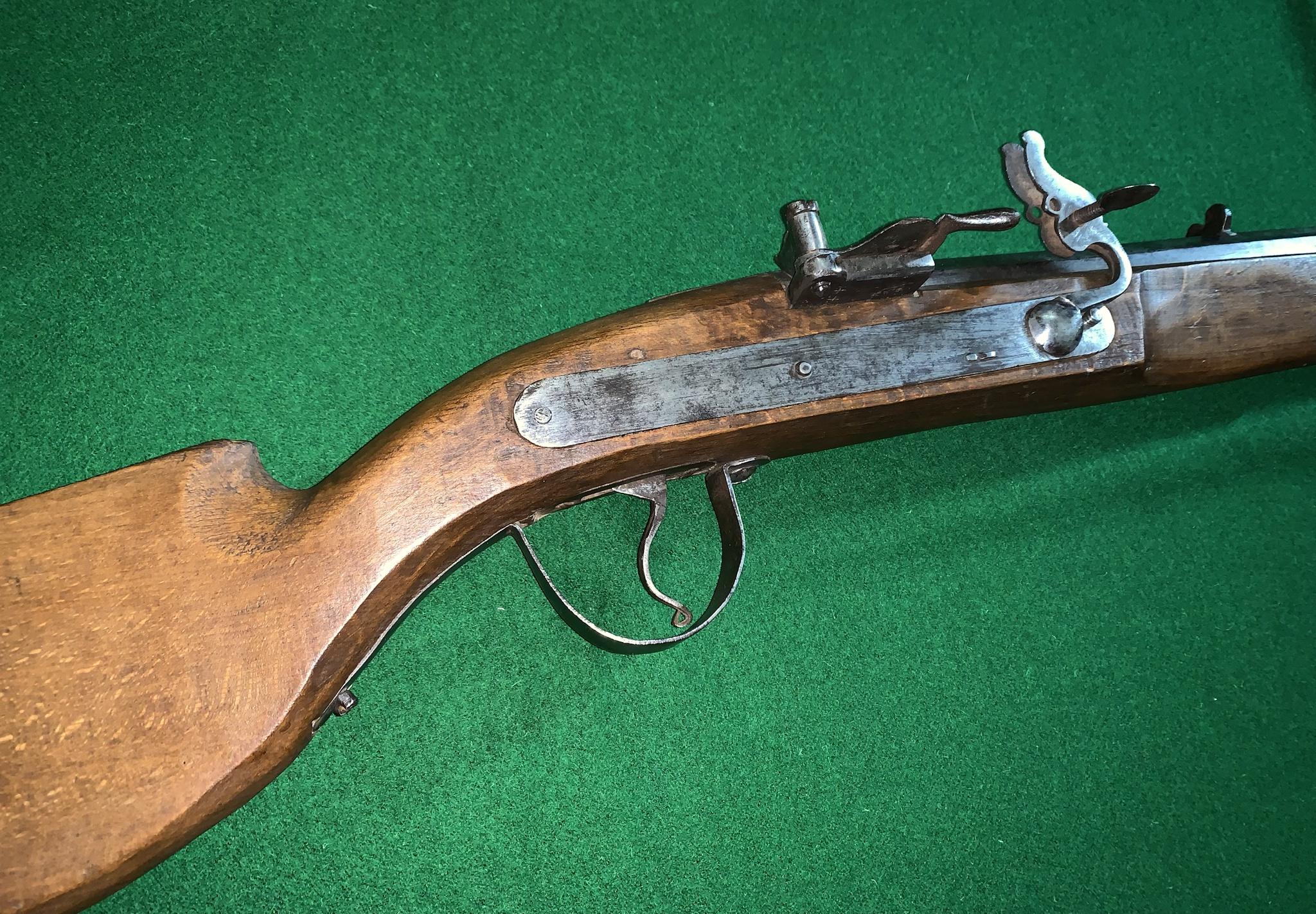- Joined
- Jun 4, 2020
- Messages
- 159
- Reaction score
- 182
Your musket looks great

the original gun I was thinking of was his 1650 Austrian matchlock with the club butt stock, but I can’t find his post about it. Oh well, this one was a closer fit anyway.


Congrats on the purchase!Was it this one?
http://www.vikingsword.com/vb/showthread.php?p=91758#post91758
At least a few were in - presumably? - a more restored condition:
https://www.bonhams.com/auctions/16881/lot/496/?category=list
I ended up getting, I believe, that exact gun at auction a couple of years ago.



Congrats on the purchase!
Here is the gun I am thinking of on Michael's rack of matchlocks:
View attachment 308799
It has a shorter and more vertical gripping section for the right hand (wrist of the stock?) than a lot of the other Austrian matchlocks.
My matchlock came in yesterday. It overall was better than expected as it is an Indian made musket. However there are a few small faults to be corrected (as I expected). I ordered this one, it is the crossbow lever model-
https://militaryheritage.com/musket15.htm
My biggest complaint is the grossly over polished metalwork. I can almost see my face in the lock plate and barrel. What would be the appropriate finish for the metal? Left white but not as over polished? Blued? I did do a search on here but did not come up with much of anything.
I understand original guns left in the white, but the Indian guns look like the bumper of a 57 Chevy.There is a strange behavior about aged finish on modern day's reenactment guns. In those times if a French officer would have found any microscopic rust on a gun this soldier would have found himself in deep, deep sh*t...
For their first breechloader (chassepot), the metal was required to be kept in a dull grey finish and over polishing was actually forbidden. Not sure if that was first introduced with the chassepot or if it was inherited from the previous minie rifle, but it provides an example of when the dulled look is historically correct.In the French army in those times as for today's a patina look on a gun would attract a kick in the butt from the Commanding Officer...
If that was the rule someone must remember that the chassepot was far away from the 16-17-18th century. Even in the Napoleonic era the guns had to be spotless as for to this day...For their first breechloader (chassepot), the metal was required to be kept in a dull grey finish and over polishing was actually forbidden. Not sure if that was first introduced with the chassepot or if it was inherited from the previous minie rifle, but it provides an example of when the dulled look is historically correct.
Very true, just an example the first step removed from their muzzleloadersIf that was the rule someone must remember that the chassepot was far away from the 16-17-18th century. Even in the Napoleonic era the guns had to be spotless as for to this day...
P.S. Commander Officer's boots were hard and heavy...
Enter your email address to join: